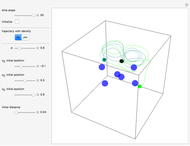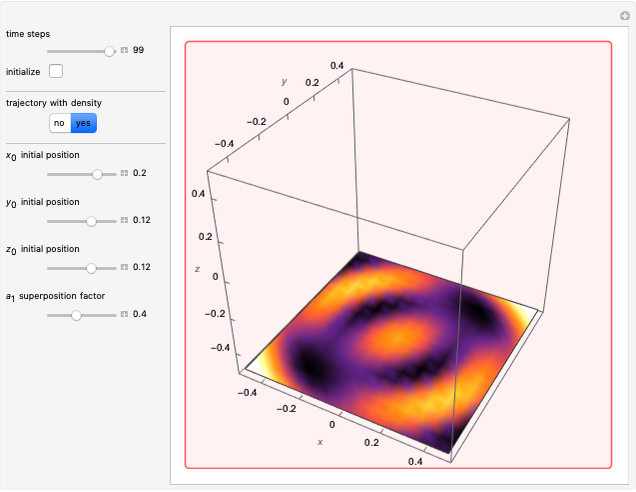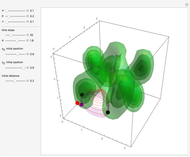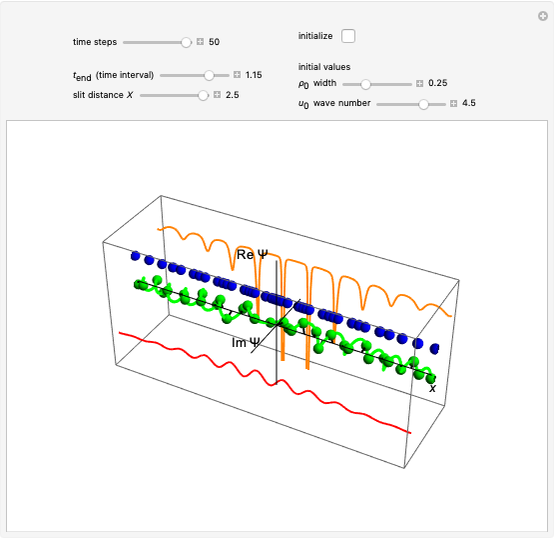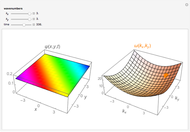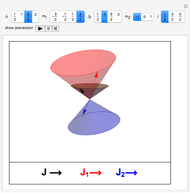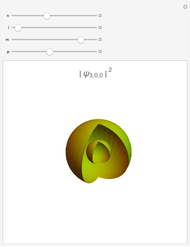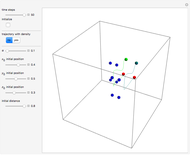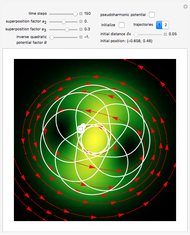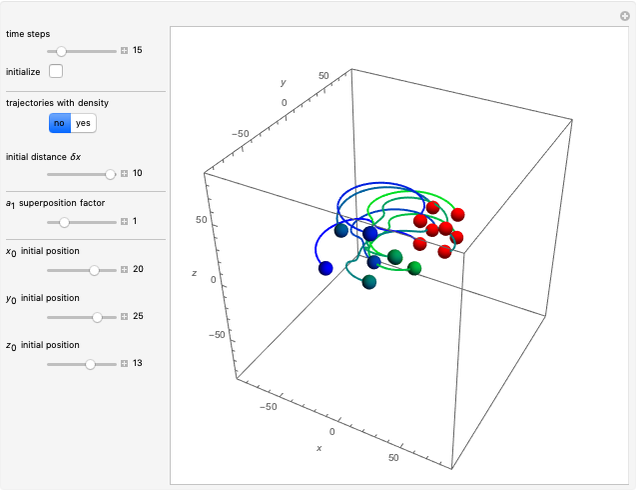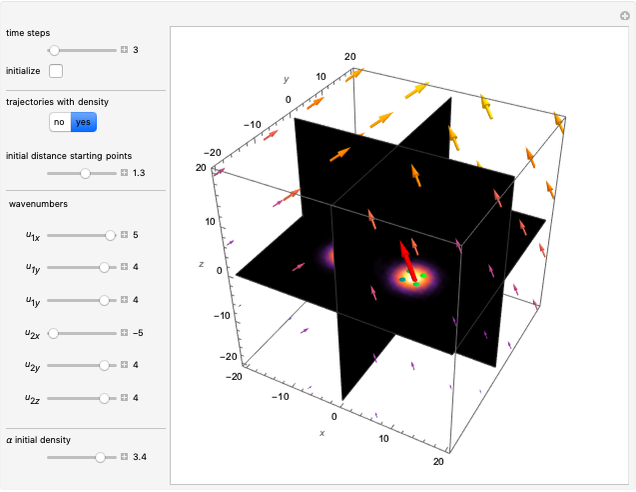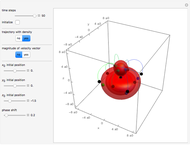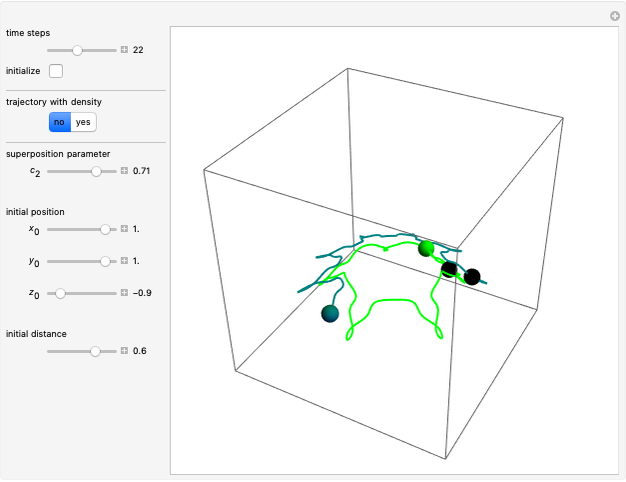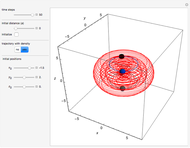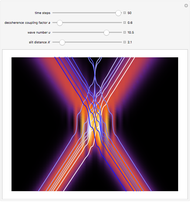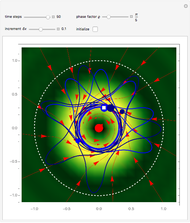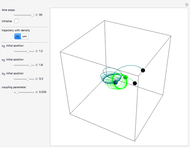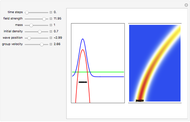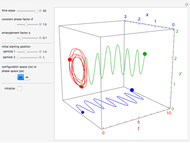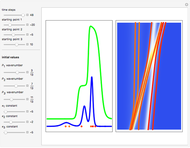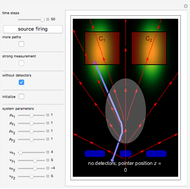Quantum Orbits of a Particle in Spherical Coordinates in a Three-Dimensional Harmonic Oscillator Potential

Requires a Wolfram Notebook System
Interact on desktop, mobile and cloud with the free Wolfram Player or other Wolfram Language products.
The isotropic three-dimensional harmonic oscillator in spherical polar coordinates is described by the Schrödinger equation
[more]
Contributed by: Klaus von Bloh (February 2019)
Open content licensed under CC BY-NC-SA
Snapshots
Details
In this Demonstration, the total wavefunction  is defined by a superposition of two eigenstates:
is defined by a superposition of two eigenstates:
 ,
,
with  and
and  .
.
In this case, the wavefunction for the harmonic oscillator in spherical polar coordinates [4] reads
 .
.
The velocity field  is calculated from the gradient of the phase from the total wavefunction in the eikonal form (often called polar form)
is calculated from the gradient of the phase from the total wavefunction in the eikonal form (often called polar form)  . The time-dependent phase function
. The time-dependent phase function  from the total wavefunction
from the total wavefunction  is
is
 .
.
For  , both initial states are weighted equally. Since the wavefunction is in the single initial state
, both initial states are weighted equally. Since the wavefunction is in the single initial state  with
with  , the orbits of the particles are circles because of the magnetic quantum number
, the orbits of the particles are circles because of the magnetic quantum number  , and for
, and for  , the particles are at rest. For these stationary states such as for
, the particles are at rest. For these stationary states such as for  and
and  , the distribution
, the distribution  with the complex conjugate
with the complex conjugate  is a constant of time; that is, it does not change. For
is a constant of time; that is, it does not change. For  and for
and for  , the distributions
, the distributions  are
are

and
 ,
,
respectively.
In Cartesian coordinates with
 ,
,

and
 ,
,
the total wavefunction combines to
 .
.
With a little more effort, it could be shown that the wavefunctions in spherical coordinates are just linear combinations of the solutions in Cartesian coordinates.
The normalization condition for the total wavefunction of  yielding a result between
yielding a result between  and
and  is defined by
is defined by

because if the position of the particle is measured, there is 100% probability that it will be somewhere.
In the program, if PlotPoints, AccuracyGoal, PrecisionGoal, MaxSteps and MaxIterations are enabled, increasing them will give more accurate results.
References
[1] Wikipedia. "Atomic Units." (Feb 26, 2019) en.wikipedia.org/wiki/Atomic_units.
[2] Bohmian-Mechanics.net. (Feb 26, 2019) www.bohmian-mechanics.net/index.html.
[3] S. Goldstein, "Bohmian Mechanics," The Stanford Encyclopedia of Philosophy, Summer 2017 Edition (E. N. Zalta, ed.), (Feb 26, 2019)plato.stanford.edu/archives/sum2017/entries/qm-bohm.
[4] A. C. Tzemos, C. Efthymiopoulos and G. Contopoulos, "Origin of Chaos Near Three-Dimensional Quantum Vortices: A General Bohmian Theory," Physical Review E, 97(4), 2018 pp. 042201-1–042201-13. doi:10.1103/PhysRevE.97.042201. arxiv.org/abs/1803.08613v1.
[5] Wikipedia. "Quantum Harmonic Oscillator." (Feb 26, 2019) en.wikipedia.org/wiki/Quantum_harmonic_oscillator.
Permanent Citation














